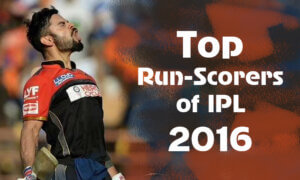How to Calculate Net Run Rate in Cricket

Cricket is a game of numbers and statistics. The stats are used for all sorts of purposes such as player analysis, team analysis and also to create batting and bowling strategies for various stages of a game such as a powerplay, death overs, etc.
In a multi-team limited-overs tournament, such as a world cup or a quadrangular, a special stat is used to break ties to determine which team moves to the next round. It is called the net run rate or NRR in short. So, what really is an NRR? How to calculate it? What are the most important details to take into account when calculating it? Let’s go deeper and find out the answers to all these questions in the following article.
Contents
What Is NRR?
p>The NRR or net run rate is a stat that is calculated for each team after every match to determine their position in the group of a multi-team tournament. It is later used, if needed, to determine the fate of a team for the next round in case more than one team has the same number of points at the end of a stage.Contrary to a popular belief, NRR is very easy to calculate and understand. The only ingredients needed here are the number of runs scored and the number of overs they have been scored in compared to the number of runs conceded and the number of overs they have been conceded in. The NRR is basically an extension of RR (run rate) with the opposition’s scoring rate also taken into account, making it a ‘net’ run rate.
A team’s NRR is affected in rain-curtailed games or if the team gets all out before the full quota of overs. We will look at this in detail in the latter part of the article. A positive NRR is desirable. It means you are scoring at a higher rate than the opposition and lower NRR means your scoring rate has been lower than the opposition’s.
Let us begin by understanding how the NRR is calculated per match.
How Is NHow Is NRR Calculated in a Cricket Match?
late the NRR in a match, each team’s run rate at the end of the innings is subtracted from the opposition’s run rate. Let’s try to understand this with various scenarios in an ODI match between Team A and Team B.
For Example:
Consider that Team A scored 265 runs for the loss of 8 wickets in 50 overs and Team B scored 230 runs for the loss of 9 wickets in their 50 overs, losing the match by 35 runs.
Team A’s run rate (RR)
= [Runs Scored/Overs faced]
= 265/50 = 5.3
Team B’s run rate (RR)
= [Runs Scored/Overs faced]
= 230/50 = 4.6
Thus,
Team A’s net run rate after the match
= Team A’s RR – Team B’s RR
= 5.3 – 4.6 = +0.7
Team B’s net run rate after the match
= Team B’s RR – Team A’s RR
= 4.6 – 5.3 = –0.7
Thus, the overall formula to calculate NRR becomes:
Team’s net run rate after each match
= [Runs Scored/Overs faced] – [Runs Conceded/Overs bowled]
The winning side will always have a positive NRR and the losing team will have an equal amount of negative NRR.
Note: Since overs are considered in calculations to be 2 overs and 1 ball, it is basically 2.33 overs [2 over and 1/6 over] for the sake of calculations in NRR.
What if Team B Gets all out before 50 Overs?What if Team B Gets all out before 50 Overs?
ickets fallen in the match does not matter if the full quota of overs is played by the teams. However, if the team gets all out, then it is assumed to have played the full quota of overs.
Consider, in our earlier example, Team A scored 265 runs for the loss of 8 wickets in 50 overs and Team B got all out for 200 runs in the 45th over, losing the match by 65 runs.
In this case, Team A’s run rate (RR) is the same, at 5.3. However, Team B’s run rate would have to be calculated considering that they played full 50 overs although they got all out in the 45th over.
So, Team B’s run rate after the match
= [Runs Scored/Full Quota of overs]
= 200/50 = 4
Thus,
Team A’s net run rate after the match
= Team A’s RR – Team B’s RR
= 5.3 – 4 = +1.3
Team B’s net run rate after the match
= Team B’s RR – Team A’s RR
= 4 – 5.3 = –1.3
That is why teams at times play out full overs in case of improbable victory in order to save their net run rate which might affect their position in the later stages of the tournament.
Note: In case of a tie, there is no change to teams’ NRR.
How Is NRR Calculated in a Tournament?
A team’s NRR calculations p
How Is NRR Calculated in a Tournament?
tions to calculate the tournament NRR achieved until then. The NRR for each match is not takne into account in this case, instead, the accumulated number runs scored and conceded and the total number of overs faced as well as the total number bowled in the tournament are considered for this calculation.For example, consider the following:
- Team A in their first match scored 300 runs for 6 wickets in 50 overs against Team B that scored 250 for 9 wickets in 50 overs, winning the match by 50 runs.
- Team A in their second match against Team C scored 230 all out in 40 overs, losing the match by 6 wickets, as Team C chased down the target in 35 overs, scoring 231 for the loss of 4 wickets.
Now let’s calculate Team A’s current total NRR in the tournament.
Team A’s total runs scored in the tournament
= 300 against Team B + 230 against Team C
= 530 Runs
Team A’s total overs faced in the tournament
= 50 against Team B + 50 against Team C (since Team A got all out)
= 100
Team A’s total runs conceded in the tournament
= 250 against Team B + 231 against Team C
= 481 Runs
Team A’s total overs bowled in the tournament
= 50 against Team B + 35 against Team C
= 85 Overs
So, Team A’s total net run rate in the tournament =
[Runs scored in the tournament/Overs faced in the tournament]
– [Runs conceded in the tournament/Overs bowled in the tournament]
= [530/100] – [481/85]
= 5.3 – 5.65
= –0.35 (Tournament NRR)
What Happens to NRR in a Rain-Curtailed Game?
This is where NRR calculation gets slightly tric
What Happens to NRR in a Rain-Curtailed Game?
atches of limited-overs cricket, the scores are adjusted to DLS (Duckworth-Lewis-Stern) system. In such cases, the revised totals and scores are used to calculate the NRR for each team.For example, Team A scored 235 in their first innings in 50 overs and Team B was at 125 after 25 overs when the interruption happened. Let’s assume the revised target by DL method was 191 in 38 overs which Team B successfully chased down in the 35th over.
In this case, while calculating the RR for Team A, the revised total – 1 run and overs will be considered.
Thus,
Team A’s RR = Revised Target/Revised Overs = 190/38 = 5
Team B’s RR would be calculated normally
= Runs Scored/Overs faced
= 191/35 = 5.45
Thus, Team A’s NRR for this match = 5 – 5.45 = –0.45
Team B’ NRR for this match = 5.45 – 5 = +0.45
What Happens to NRR in an Abandoned Game?
When calculating the NRR, only those matches are considered that have h
What Happens to NRR in an Abandoned Game?
or some other reason then the scores of that match are omitted from NRR calculations.The reason behind this is that NRR is a zero-sum calculation. If one team gets a boost in NRR by X amount the other team must receive an equal amount of negative X depreciation in NRR. In an abandoned match, it is not possible to achieve the zero-sum state and thus, the whole match is excluded from the NRR calculations.
What Is the Criticism About NRR?
There’s been some criticism about NRR since it does not accurately determine the
What Is the Criticism About NRR?
lost are not considered anywhere in the calculations. Thus, teams playing sensibly and keeping wickets in hand to reach their target are not sufficiently rewarded. Teams might try going full guns blazing to improve the NRR and might risk losing the game altogether.Secondly, the NRR system can be manipulated. Stronger teams at times deliberately reduce the margin of victory against a weaker opposition if that helps the weaker team to advance to the next round so that they would probably get to face a weaker opposition in the next round. Something that Australia did in the 1999 World Cup in New Zealand’s disadvantage by reducing the margin of victory against the West Indies.
Conclusion
NRR is a system that has been successfully applied in limited-overs cricket. It has its flaws but no syste






